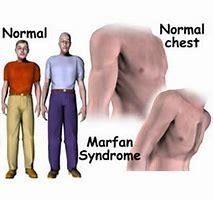Match each physiological sign with the blood vessel disorder it describes.
Answer options may be used more than once or not at all. Select your answers from the
pull-down list.
Air bubble in the artery or vein
Bulging sac of blood in artery
A clot of blood in artery
Aneurysm
Correct Answer : A,B,C
a. Air bubble in the artery or vein- thromboembolism (air embolism, occurs when air
enters the bloodstream and blocks blood flow to vital organs. It can be caused by
trauma, surgery, injection, or diving)
b. Bulging sac of blood in an artery- aneurysm (it occurs when a weak spot in an artery
wall balloons out and fills with blood. It can be caused by high blood pressure,
atherosclerosis, infection, or genetic factors)
c. Clot of blood in an artery- thrombus (arterial thrombosis, which occurs when a blood
clot forms in an artery and blocks blood flow to tissues or organs. It can be caused by
atherosclerosis, injury, inflammation, or hypercoagulable states)
Nursing Test Bank
Naxlex Comprehensive Predictor Exams
Related Questions
Correct Answer is B
Explanation
ESRD is a condition in which the kidneys lose their ability to filter waste and fluid from the blood, resulting in a buildup of toxins and fluid in the body. ESRD can cause symptoms such as lethargy, oliguria (reduced urine output), and itchy and dry skin due to uremia (high levels of urea in the blood). ESRD can also cause anemia (low levels of red blood cells), which can explain the decrease in hemoglobin and hematocrit. ESRD can be caused by chronic conditions such as hypertension, diabetes, and coronary artery disease, which damage the kidneys over time.
Correct Answer is C
Explanation
Marfan syndrome is a genetic disorder that affects the connective tissue, causing problems with the heart, blood vessels, eyes, bones, and joints. It is caused by a mutation in the FBN1 gene, which encodes for a protein called fibrillin-1. Marfan syndrome follows an autosomal dominant pattern of inheritance, which means that only one copy of the mutated gene is needed to cause the disorder. A person with Marfan syndrome has a 50% chance of passing on the mutated gene to each child, regardless of the gender of the parent or the child.

Whether you are a student looking to ace your exams or a practicing nurse seeking to enhance your expertise , our nursing education contents will empower you with the confidence and competence to make a difference in the lives of patients and become a respected leader in the healthcare field.
Visit Naxlex, invest in your future and unlock endless possibilities with our unparalleled nursing education contents today
Report Wrong Answer on the Current Question
Do you disagree with the answer? If yes, what is your expected answer? Explain.
Kindly be descriptive with the issue you are facing.
